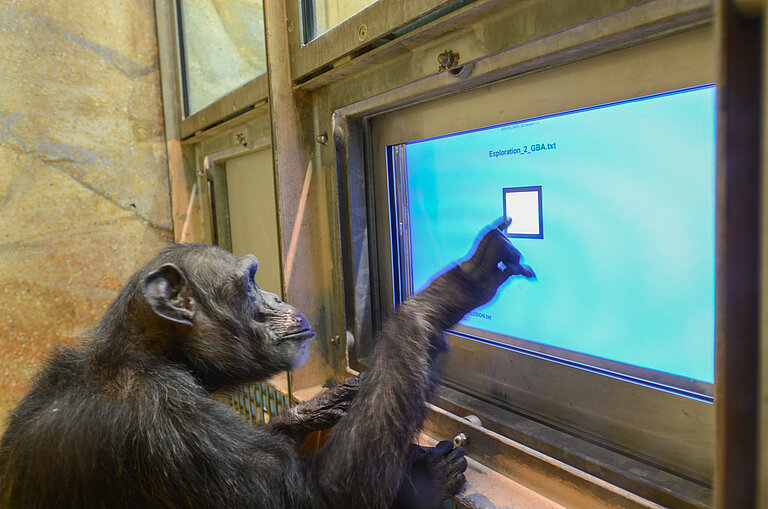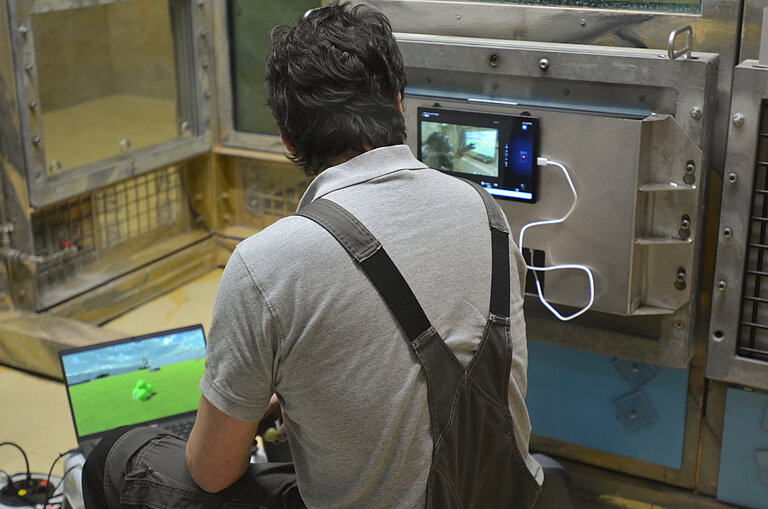Touch Screen

Touchscreens have been used in cognitive enrichment and research with primates for a long time because they are so versatile. They provide apes with tasks that stimulate their natural curiosity and problem solving abilities. At the same time, touchscreens allow researchers to collect data with high precision and in a way that can easily be adapted to other human and nonhuman primate populations, making comparisons easier to interpret. Many of the chimpanzees, gorillas and orang-utans at the WKPRC have experience with touchscreen studies, and they get regular opportunities to participate voluntarily in exchange for extra servings of their favourite foods.
Read more
The touchscreens at the WKPRC work with infrared technology. The setup consists of a touch frame that collects the ape’s manual input, and the display that presents the study procedure and which is mounted behind the frame. When the infrared grid is interrupted by an ape’s hand, the coordinates of this interruption are transmitted to the study software. The touch frame and the display are separated by a transparent sheet of polycarbonate.
Touchscreen study conducted at WKPRC at Leipzig Zoo
Many of the Leipzig apes have several years of experience using touchscreens, and have participated in a range of different studies. These have included, for example, simple discrimination and preference tasks that study how apes categorize pictures (Close & Call, 2015), what kinds of image shapes they prefer (Munar et al., 2015), or how they map pictures to sounds (Margiotoudi et al., 2019). Some of the Leipzig apes have experience with serial learning tasks, in which they need to clear pictures off the screen in a specific order. This task can be used to study how the chimpanzees plan and how they deal with uncertainty (Allritz et al., 2021). Touchscreens are also used in studies of social cognition. For example, one study investigated how chimpanzees coordinate their behaviors, and how they communicate, when playing a virtual ball back and forth between two touchscreens (Voinov et al., 2020). Recently, we have begun to provide the apes with rich and colourful virtual environments that they can navigate to find hidden virtual food.
